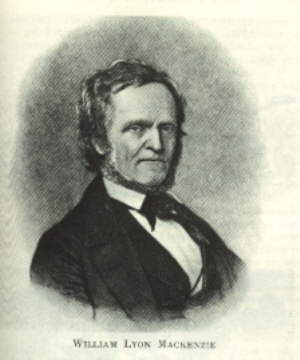
|
|
The Harvey Years
 
Local Events
 | In March 1834, the town of York on the other side of Lake Ontario from Niagara became the city of Toronto with the popular firebrand William Lyon Mackenzie elected as the city's first mayor.
From 1833 through to 1840, Niagara, as Niagara-on-the-Lake was then called, doubled in population, which meant reasonably good times for the town in spite of the 1829 opening of the first Welland Canal.
Niagara was incorporated as a town in 1845, with James Harvey, as already noted, chosen as a member of its first municipal council. Very frequently, members of professions and storekeepers were elected to municipal office. |
They were in a position to be knowledgeable about the people and the issues. Of course, being successful in a profession or business had presupposed sufficient popularity to become elected. However, unpopular political decisions sometimes lead to drastic actions against the premises of councilors, as Henry Paffard learned later.
The completion of the second Welland Canal in 1845 also posed a serious challenge to the prosperity of Niagara. This time, the canal had sufficient draft and capacity to handle the larger ships and the rapidly growing number of steamships that were then plying the Great Lakes. Very quickly, what remained of the portage and transhipment business around Niagara Falls disappeared. This had serious consequences for the economy of Niagara and other towns along the Niagara River.
A further challenge to the town's future came with the issue as to whether
Niagara or St. Catharines was to be selected as the county seat of Lincoln County. In a bid for this honour, the town of Niagara built the Courthouse on Queen Street (diagonally across from the Apothecary) in 1847. This effort and expense was to no avail as St. Catharines became the county seat. Indeed, the prosperity and population growth primarily caused by that city's location on the Welland Canal gave St. Catharines the edge.
The courthouse in Niagara-on-the-Lake, until recently, housed the public library and has since, for some decades, also served as one of the town's three theatres for the acclaimed Shaw Festival.
At the young Queen Victoria's request, Lord Durham accepted an appointment as Governor in Chief of British North America with powers to investigate and report on the causes of the rebellions in Upper and Lower Canada. Lord Durham arrived in the spring of 1838. His Report on the Affairs of British North America is of major importance in the subsequent history both of Britain and Canada. He recommended that Upper and Lower Canada be merged under a single parliament, saying that if the colonies were given as much freedom to govern themselves as the people of Britain, they would become more loyal. He even forecast the union of all British North American Colonies.
Although Durham died within a year of his report in 1841, Upper and Lower Canada were united into the Province of Canada with one parliament. The former colonies were then referred to respectively as Canada West and Canada East.
In 1851, Canada adopted prepaid postage. The now extremely rare and valuable collectors' item, the "Three-Penny-Beaver" designed by Sir Sandford Fleming, became Canada's first adhesive postage stamp. At the same time, he also designed for issue a 12 pence stamp with a portrait of Queen Victoria and a six penny portrait of Prince Albert. Apparently, Fleming was engaged by the first postmaster general based on the handsome labels he had designed for a Toronto pharmacy, above which he had his office. Fleming also promoted the adoption of international standard time in 1884; and was chief engineer for the construction of both the inter-colonial railway and the CPR railway in 1871.
 
|
|
 |


